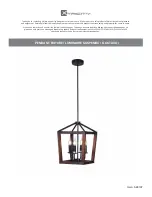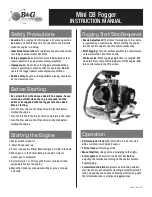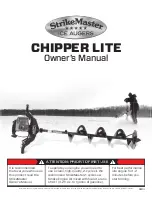
1-1
Introduction
The TriaDyne Proventa™ Critical Care Therapy System provides a comprehensive system of pulmonary
therapies clinically proven to improve outcomes and advanced skin care therapies for the critically ill,
immobilized patient.
• Early Mobilization – The application of Kinetic Therapy™, the gentle, side-to-side rotation of a patient to
a minimum of 40° degrees on each side has been demonstrated to significantly reduce the prevalence of
ventilator associated pneumonia as well as leading to shorter ventilation time and length of stay.
1
Rotation is programmable in 5° increments up to 40° and also features an acclimation mode as well as
pause and hold functions to suspend the patient in a side lying position for ease in nursing care.
• Percussion Therapy – Chest physiotherapy can be used in conjunction with
Kinetic Therapy
during
rotation to further mobilize pulmonary secretions. Percussion Therapy can be customized by adjusting
frequency, intensity and duration of therapy.
• Pulsation Therapy – Pulsating air suspension therapy automatically alternates cushion air pressures in
chambers under the torso and leg that run from foot to head and emulate the body’s natural intermittent
movements. Clinical benefits include improved capillary blood flow, increased oxygenation to the wound
and skin, stimulation of lymphatic flow, reduced edema and reduced pressure-induced pain.
2
Pulsation Therapy can be customized with programmable intensities and cycle times, used in conjunction
with
Kinetic Therapy
and Percussion Therapy or used as a stand-alone therapy.
• Low Air Loss Therapy – Optimizes skin microclimate, keeping the patient cool and dry while conforming
to bony prominences to help mitigate development of pressure ulcers and prevent pressure induced pain.
• Prone Therapy – The
TriaDyne Proventa
Critical Care Therapy System offers a Proning Accessory Kit to
provide customized therapeutic options for individual patient needs.
Indications:
The
TriaDyne Proventa
Critical Care Therapy System is indicated for complications associated with immobility:
• Prevention or treatment of pulmonary complications
• Prevention or treatment of pressure ulcers
• Any other use where medical benefits may be derived from continuous lateral rotation therapy or
percussion / vibration therapy.
Contraindications:
• Unstable vertebral, pelvic, skull* or facial* fractures
• Cervical and / or skeletal traction
• Unstable spinal cord injury
• Uncontrolled intracranial pressure (ICP)*
*Only contraindicated for prone therapy
1 Continuous lateral rotation therapy to prevent ventilator-associated pneumonia. (2010). Critical Care
Medicine, 38(2), 486-490.
2 Therapeutic and Financial Outcomes Using a Pulsating Low-Air-Loss Surface for Patients Surviving Severe
Posterior Burns. (2000). Ostomy Wound Management, 46(3), 64-69.










































